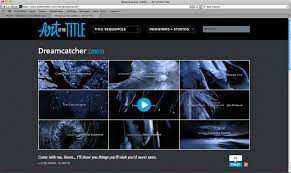Creative Critical Reflection
Creative Critical Reflection
1. How does your product use or challenge conventions AND how does it represent
social groups or issues?
My music video uses conventions by using Christmas editing transitions and effects. In a stereotypical music video, there are plenty of fade-ins and fade-outs related to Christmas. In my music video I took advantage of that and applied them. I also used conventions by playing the stereotypical Santa Claus story. My song for this music video is “Santa Claus is Coming to Town,” by the Jackson Five. I highlighted what Santa does which is to make sure everyone is behaving, and in reward he gives them presents. In my music video, my props consisted of presents, teddy bears, and Santa’s sack. All of these are the typical toys Santa gives children. There were many ways I went against conventions as well. In Christmas music videos, the actors are usually in some magical Christmas wonderland. Since I don’t have the resources to acquire a greenscreen and grasp all those effects I recorded my music video inside a mall instead. This still works because there were some Christmas decorations available for us to use. I also went against conventions by having teenagers play the role as young children for the music video. When I was researching Christmas music videos, I noticed that the story is always centered around a hopeful child excited for Santa Claus and Christmas. Teenagers are typically less interested in the idea of Santa Claus because they find it childish. In my music video however, the actors are thrilled and filled with joy upon Santa Claus’s arrival. My group and I couldn’t afford the props typically used in Christmas music videos, so I went against conventions by using cheap props. One significant way I went against conventions was by having a Jewish, skinny, darker skinned Santa Claus. Today when someone thinks of Santa Claus, they think of a fat white man, with a white beard. Santa Claus is mythical so he can be anything you want. In my music video I challenged this social issue by using someone who is Jewish; any religion can play the role of Santa Claus, someone who is skinny, and someone who doesn’t even have a beard.
2. How does your product engage with audiences AND how would it be distributed as a real media text?
My music video engages with audiences by fitting the time of the year. Christmas is coming up soon, so this music engages with audiences because it’s Christmas related. My music video is relevant to what’s occurring around me due to the season. Everyone is listening to Christmas music, decorating their houses, watching Christmas movies, and watching Christmas music videos. My video will inflict the audience with joy, laughter, and smiles all around. During December is when Christmas music videos blow up in views. This music video can be distributed as a real media text by being uploaded to YouTube. YouTube is the universal platform for music videos so displaying my music video on YouTube is a great way to distribute it as a real media text. To promote this, however, I will use social media platforms such as TikTok and Instagram. This will allow me to use my platform to promote my music video on another platform. This is being distributed as real media text because it’s on social media. If everything went to plan and my video gained enough notice, I’ll eventually be able to stream it on television. A well-known channel for music videos is called MTV. Getting my music video on MTV is the end goal because that will engage with audiences watching television. This is distributed as a real media text because it’s on television. My goal is to engage with many audiences as possible and these are a few ways I am engaging with audiences and using real media text.
3. How did your production skills develop throughout this project?
My production skills have developed significantly because I’ve learned a lot of emotional intelligence. Filming this music video was the most challenging project of my life. It wasn’t because it was hard to film; I had to work with many actors and make sure they all stayed on task. I recorded my music video inside a mall, so there were many distractions. Two of my group members didn’t even show up to the set for the music video. This put me under a lot of stress because Anayah is the director, and Billy was one of the main characters. To deal with all this stress, I developed a skill called emotional intelligence, or in other words, controlling my emotions and working with people. In production, you need to have patience to work with people and I was able to achieve this throughout this project. I also learned how to film music videos too. My last project was a commercial and I didn’t have to deal with the camera. This time I had to use my gimbal to record, and my father taught me how to operate it. I then was able to teach Robert how to use the gimbal, so I was able to develop my recording and handling skills. I also learned how to cut parts of a song to match up with the clips recorded. Going into this project I was unsure on how to jump some of the song and have it match the video. I was able to do this successfully, my cutting what was not needed. During my last project, I was having issues editing the video because it was way too long. This time, I estimated how long each clip would take to reach my target of 1:10-1:15 seconds. I’ve gained a lot of experience in working under pressure which has developed my production skills even further.
4. How did you integrate technologies – software, hardware and online – in this
project?
I first integrated technologies by using what is called a gimbal. This technology is a video stabilizer which can be used for a professional camera or a smartphone. This technology kept our video smooth and allowed us to get all the high, low, and Dutch angles needed. The gimbal can also tilt so that allowed us to get some fluent tilt shots. For my last project I used a professional camera but due to some issues I couldn’t this time. I instead recorded the music video on an iPhone 13 camera. The modern iPhone cameras can record in 4k at 60 fps which matches some cameras, so the phone worked well to record. The only issue was that to transfer the clips onto a computer to edit them was by using a software called “We transfer.” This allows the clips to not decompress and remain at their original quality. The issue was that I couldn’t transfer the clips to the computer because it was moving at a slow rate. I then just used Robert’s laptop to log into iCloud and upload it that way. The transfer was successful, but the quality of the video was downgraded. The editing software that was used was called Filmora. To use this, you need to have a subscription but it’s worth it. With Filmora, I can use Christmas templates and effects for my music video. This is great because I’m recording a Christmas music video. Not many editing software's have effects like these so integrated all these special effects into my music video. I’m uploading the music video online to YouTube so it can be visible to anyone who may wish to see it. Technology now a days is essential to have a visually pleasing and visually sounding product.



Comments
Post a Comment